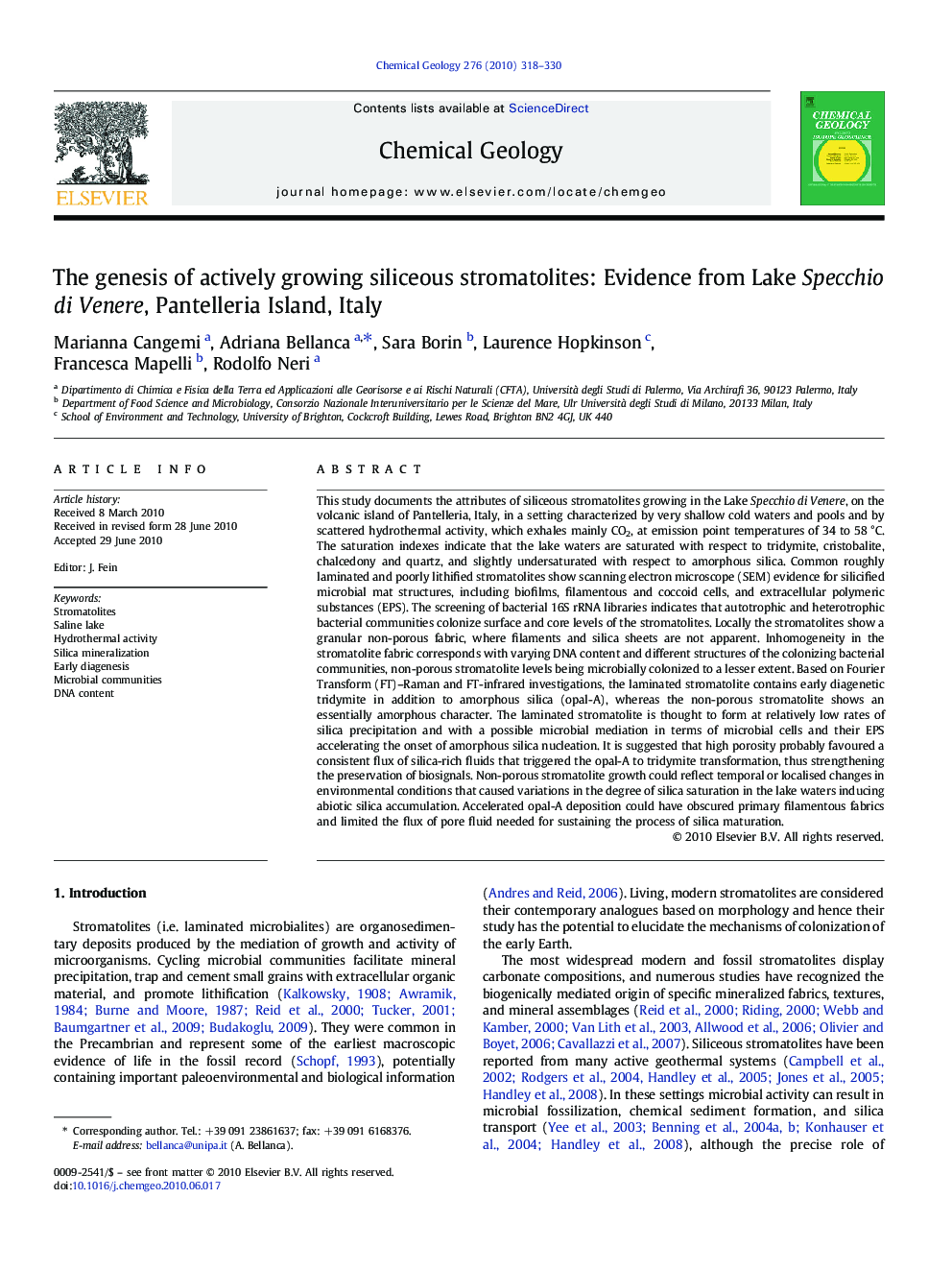| کد مقاله | کد نشریه | سال انتشار | مقاله انگلیسی | نسخه تمام متن |
|---|---|---|---|---|
| 4700026 | 1637683 | 2010 | 13 صفحه PDF | دانلود رایگان |

This study documents the attributes of siliceous stromatolites growing in the Lake Specchio di Venere, on the volcanic island of Pantelleria, Italy, in a setting characterized by very shallow cold waters and pools and by scattered hydrothermal activity, which exhales mainly CO2, at emission point temperatures of 34 to 58 °C. The saturation indexes indicate that the lake waters are saturated with respect to tridymite, cristobalite, chalcedony and quartz, and slightly undersaturated with respect to amorphous silica. Common roughly laminated and poorly lithified stromatolites show scanning electron microscope (SEM) evidence for silicified microbial mat structures, including biofilms, filamentous and coccoid cells, and extracellular polymeric substances (EPS). The screening of bacterial 16S rRNA libraries indicates that autotrophic and heterotrophic bacterial communities colonize surface and core levels of the stromatolites. Locally the stromatolites show a granular non-porous fabric, where filaments and silica sheets are not apparent. Inhomogeneity in the stromatolite fabric corresponds with varying DNA content and different structures of the colonizing bacterial communities, non-porous stromatolite levels being microbially colonized to a lesser extent. Based on Fourier Transform (FT)–Raman and FT-infrared investigations, the laminated stromatolite contains early diagenetic tridymite in addition to amorphous silica (opal-A), whereas the non-porous stromatolite shows an essentially amorphous character. The laminated stromatolite is thought to form at relatively low rates of silica precipitation and with a possible microbial mediation in terms of microbial cells and their EPS accelerating the onset of amorphous silica nucleation. It is suggested that high porosity probably favoured a consistent flux of silica-rich fluids that triggered the opal-A to tridymite transformation, thus strengthening the preservation of biosignals. Non-porous stromatolite growth could reflect temporal or localised changes in environmental conditions that caused variations in the degree of silica saturation in the lake waters inducing abiotic silica accumulation. Accelerated opal-A deposition could have obscured primary filamentous fabrics and limited the flux of pore fluid needed for sustaining the process of silica maturation.
Research Highlights
► Combined petrographic, geochemical, mineralogical and microbiology investigations
► Combined petrographic, geochemical, mineralogical and microbiology investigations
► Based on Raman and FT-IR, tridymite is a variable component in the stromatolites
► Based on Raman and FT-IR, tridymite is a variable component in the stromatolites
► Diagenetic transformation is inhomogeneous and not simply related to sample depth/age
► Fabric and biosignal preservation vary with changes of environmental conditions
► Inhomogeous fabric is concurrent with varying DNA content and microbial diversity
Journal: Chemical Geology - Volume 276, Issues 3–4, September 2010, Pages 318–330